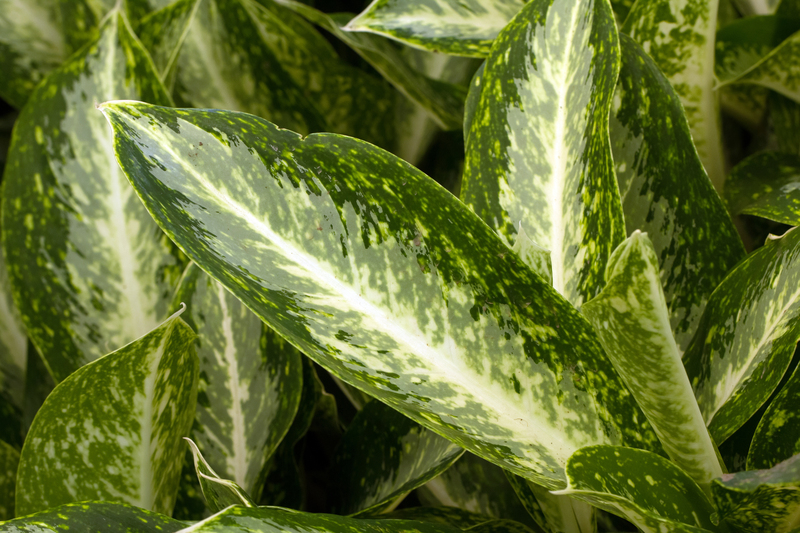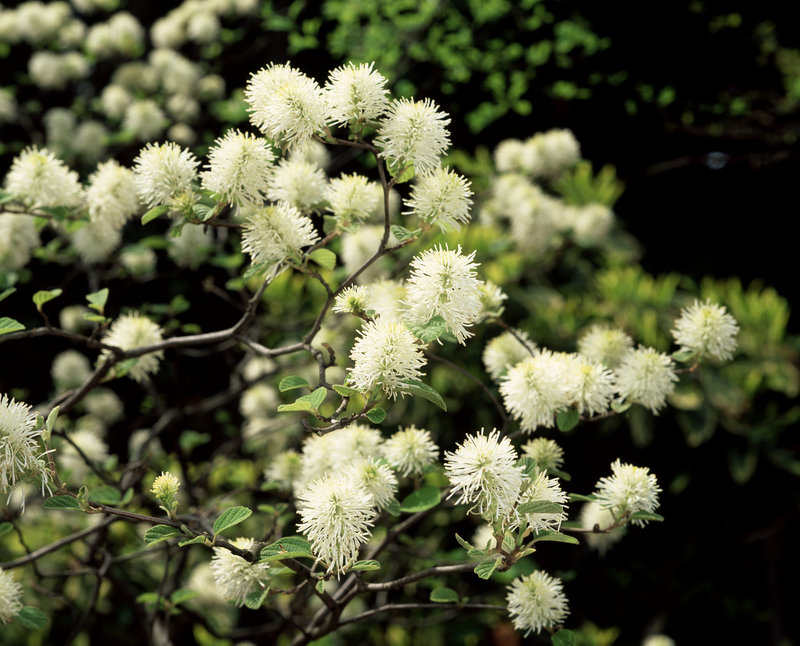Tips to Ensure Your Garden Thrives with Dogs Around
Posted on 25/06/2025
Tips to Ensure Your Garden Thrives with Dogs Around
Having a bountiful, beautiful garden coexisting peacefully with energetic and curious dogs is a dream for many pet owners. However, dog-friendly gardens require special care and a strategic approach to ensure your flowers, vegetables, and outdoor haven not only survive but flourish alongside your four-legged friends. Whether you're working with a small patio or a sprawling lawn, taking proactive steps can keep both your pooch and plants happy. In this guide, you'll uncover detailed, effective tips for gardening with dogs, learn how to create a resilient landscape, and ensure your garden thrives even with playful paws around.
Understanding Dogs in the Garden: Common Challenges
Before diving into solutions, it's important to recognize the ways in which dogs can impact your garden's ecosystem. Here are some common issues faced by gardeners with dogs:
- Digging: Many breeds have a natural instinct to dig, uprooting plants and damaging soil structure.
- Urine & Waste Damage: Dog urine is rich in nitrogen, which can cause lawn burn and yellow patches, while solid waste can introduce pathogens.
- Plant Chewing: Curious canines may nibble on leaves, stems, or flowers, some of which could be harmful to them.
- Trampling: Running, playing, and chasing can compact the soil, break stems, and flatten delicate blooms.
- Path Disruption: Dogs often create their own routes, disregarding your carefully planned garden paths.
Understanding these potential hazards is the first step to cultivating a dog-proof garden that thrives.

Create Safe and Deliberate Dog Zones
Designate Digging Areas
Instead of battling your dog's digging instinct, channel it constructively. Pick a spot in your yard, possibly out of direct view, where your pet is allowed to dig. Line it with sand or loose soil and bury toys or treats so your dog understands this is their special digging spot. By rewarding your dog for using this space, you'll protect the rest of your garden beds from accidental excavation.
Establish Clear Paths
Dogs benefit from consistency and structure. Create dog-specific walkways using durable, paw-friendly materials like gravel, mulch, stepping stones, or even artificial turf. These dog garden paths not only discourage cutting through garden beds but also minimize soil compaction and allow for smooth patrolling. Train your pet to use these routes through repetition and reward.
Provide Shady Resting Spots
Dogs love lounging outdoors, especially in a soft, cool spot. Plant shade trees, place a comfy outdoor bed on your patio, or use a doghouse to tempt your pooch to relax. This reduces the urge to trample flowerbeds in search of shelter during hot days.
Dog-Safe Garden Design Principles
Fencing and Borders
A well-planned barrier is your garden's first line of defense. Low garden fences, raised beds, or decorative stone borders can clearly mark "off-limits" areas for your dog. For determined jumpers, consider higher fencing or prickly but non-toxic shrubs as a natural deterrent.
Raised and Contained Planting Beds
Raised beds protect roots and stems from paws and urine. Try wood, metal, brick, or even recycled plastic. Not only do they keep dogs at bay, but they also improve drainage and make maintenance easier. *Container gardening* is another flexible option for decks, balconies, or small yards, allowing you to control both access and soil quality.
Mulching Matters
Choose dog-friendly mulch: cedar chips, pine needles, or shredded bark. Avoid cocoa mulch, which is toxic to dogs, and steer clear of sharp materials like large bark chunks or gravel that could injure paws. Mulch helps suppress weeds, retain moisture, and can disguise areas where dogs like to dig.
Choose Plants That Can Withstand Dogs
Go for Hardy, Low-Maintenance Species
When planning your garden, select resilient plants that bounce back from rough canine encounters. Some excellent *dog-proof plants* include:
- Lavender - Aromatic, tough, and often deters dogs with its scent.
- Marigold - Hardy and known for repelling pests.
- Rosemary - Fragrant and durable, suitable for borders.
- Ferns - Great for shaded areas and non-toxic.
- Daylilies - Withstand trampling and return every year.
- Sunflowers - Sturdy stalks that can survive occasional bumps.
Pick Non-Toxic Varieties
Some popular garden plants are toxic to dogs. Always check a plant's safety before adding it to your backyard ecosystem. Avoid azaleas, lilies, sago palms, foxgloves, and daffodils, which can cause serious harm if ingested.
*Pro tip*: Display a list of dog-safe and dangerous plants near your potting station for easy reference.
Train and Supervise Your Dog in the Garden
No garden is entirely dog-proof without consistent training. Patience and positive reinforcement go a long way:
- Use commands like "leave it," "off," and "no digging" during supervised outings.
- Reward your pup for following garden boundaries and paths.
- Provide toys, treats, and designated play spaces to keep them engaged.
- If digging or chewing persists, gently redirect to the appropriate zone or item.
Remember, training is a continual process and may need to be reinforced as seasons or the layout changes.
Manage Dog Waste Responsibly
Dog feces and urine are natural, but they can damage your lawn and pose health risks to both humans and pets. Here's how to manage waste efficiently:
- Pick up solid waste daily to prevent pathogen build-up, odor, and unsightly patches.
- Encourage your dog to use a specific spot, ideally with gravel or sand for easy cleanup.
- If your dog has urinated on grass, wash the area with water to dilute nitrogen and minimize burn.
- Consider a patch of artificial turf as a dedicated potty zone, away from sensitive plants and vegetables.
*Fact:* A designated dog toilet area keeps both flora and fauna healthy--and it's easier to maintain.
Protect Your Garden from Dog-Related Damage
Install Barriers for Delicate Areas
Use decorative edging, bamboo screens, or small picket fences to cordon off fragile flower beds, vegetable patches, or newly seeded areas. Barrier netting or garden cloches are especially useful for protecting young, vulnerable plants from curious noses.
Temporary Fencing During Recovery
When reseeding a lawn or planting new beds, consider temporary wire or mesh fencing to prevent curiosity and trampling during plant establishment.
Repellents and Safe Deterrents
There are *natural dog repellents* you can use to discourage unwanted digging or chewing, such as citrus peels, vinegar sprays, or commercial pet-safe deterrent granules. Never use harsh chemicals! Safety first, especially with edible crops and exploring animals.
Water Features and Dog Safety
If you have ponds, fountains, or pools, ensure they are dog-friendly. Shallow steps, secure covers, or fencing around deep water will prevent accidents and keep your dog safe. Avoid water features with toxic water treatments or sharp stones. A small wading pool or splash pad can distract your dog from sensitive plant areas and provide cooling relief in summer.
Gardening with Dogs: Maintenance Tips
- Inspect and repair fences, gates, and barriers routinely.
- Refresh mulch as needed and ensure no sharp objects are exposed.
- Trim back overhanging branches that could invite jumping or climbing.
- Practice regular lawn care: fertilize, dethatch, and aerate to combat compaction.
- Check for toxic mushrooms or plants that may sprout unexpectedly.
Routine upkeep minimizes risk and ensures a beautiful, pet-friendly garden all year long.
Seasonal Garden Adjustments with Dogs
Spring & Summer
- Protect seedlings and young plants with screens or cloches.
- Provide extra shade and hydration for active pets.
- Swap out cool-season plants for heat-tolerant, sturdy varieties.
Autumn & Winter
- Clear fallen leaves that can hide dangers or create slippery play zones.
- Monitor for ice, frozen water bowls, and salt-based deicers (which can harm paws and plants).
- Mulch beds to insulate roots from cold--and check that mulch is non-toxic.
Seasonal checks and plant swaps keep your landscape safe, fresh, and resilient.

Dog Breeds and Garden Compatibility
Certain breeds are more prone to digging, chewing, or running laps through the flower beds. High-energy breeds like terriers, retrievers, and herding dogs may need more robust boundaries and frequent redirection. In contrast, some older dogs or smaller companion breeds may be gentler on your green spaces.
Regardless of breed, exercise and mental stimulation are vital. A tired dog is less likely to cause garden chaos!
Conclusion: Creating Harmony Between Your Dog and Garden
It's entirely possible to enjoy a lush, thriving garden with dogs as part of your family. With smart layout, plant selection, dog-friendly features, and consistent training, your outdoor space can be both a sanctuary for flora and a paradise for your pooch. Remember:
- Be proactive: Direct energy and curiosity toward designated zones and reinforce boundaries.
- Choose wisely: Pick hardy, non-toxic species and durable materials.
- Stay vigilant: Ongoing training, maintenance, and seasonal adjustments are key.
With these tips for ensuring your garden thrives with dogs around, you can cultivate beauty, bounty, and a safe haven for all your loved ones--two- and four-legged alike! Happy gardening!

